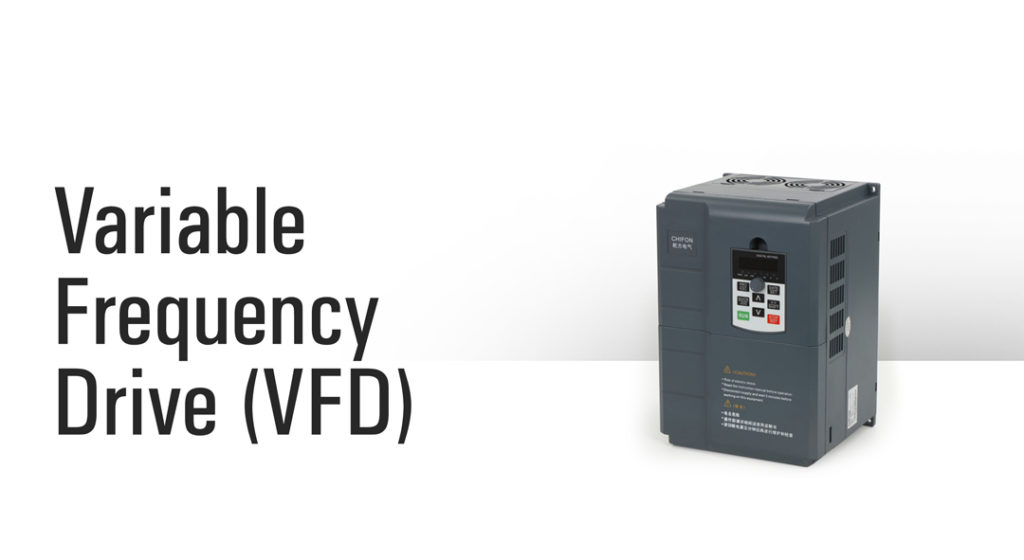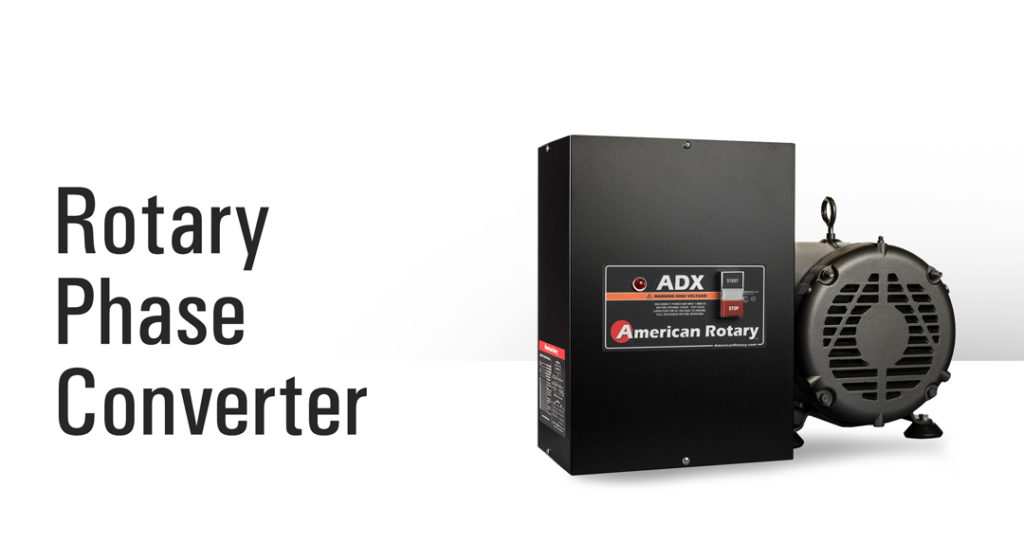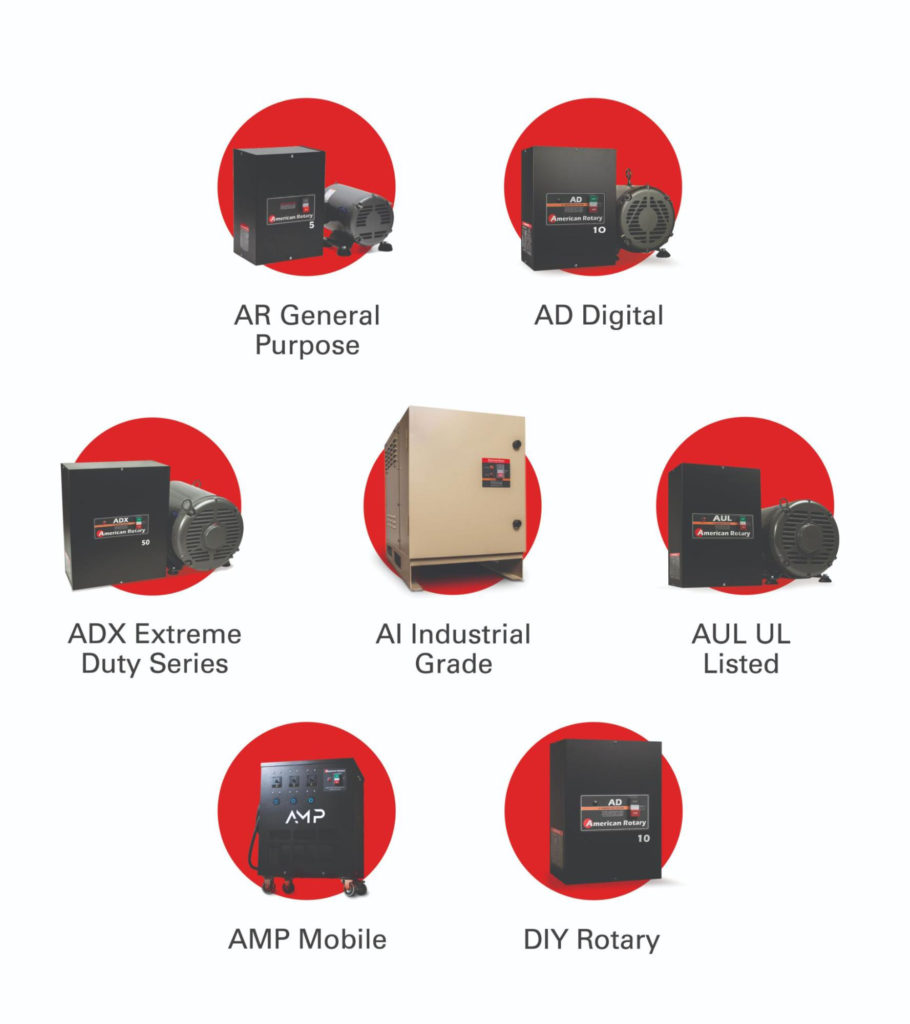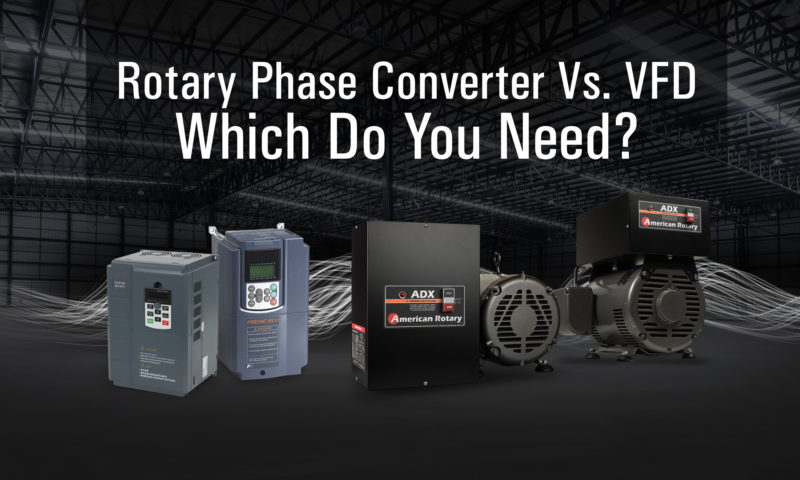What’s the best way to power three-phase equipment in your workshop? VFDs and rotary phase converters are two key options, each with its own strengths and limitations.
VFDs are an efficient way to power individual machines, while rotary phase converters are ideal for powering multiple pieces of equipment. The right answer for you depends on several considerations. So let’s take a closer look at these choices, their advantages and disadvantages, and explore situations when one or the other makes more sense.

Variable Frequency Drive (VFD)
The function of a variable frequency drive is implied in the name. It drives a motor and adjusts its speed by varying the frequency and voltage of the supplied power.
You’ll see this equipment referred to in many different ways, including variable speed drive, AC drive, and adjustable-frequency drive.
It involves an inverter that uses solid-state electronics to output three-phase power from a single-phase input. A VFD also can ramp the power up or down during startup or shutdown.
As you can imagine, VFDs are well suited for equipment that may have varying power requirements, including CNC machines, HVAC systems, and a variety of woodworking equipment.

Advantages
A VFD is precisely matched to the machine it’s powering. As the needs of an application change, a VFD has the unique ability to adjust the motor speed accordingly. This approach offers key advantages, including:
- Energy savings are created by the ability to reduce the electrical load and slow the motor when appropriate.
- Quiet operation, with no moving parts performing the single-phase to three-phase conversion.
- Extends the life of the machine the VFD powers by varying electric motor speeds to reduce mechanical stress.
- Low cost per unit, with many 1 HP models starting at just a couple hundred dollars.

Disadvantages
Depending on your perspective, the precision of a VFD can also create disadvantages, including:
- You can only power one piece of equipment, and that machine must be three-phase. So while the per-unit cost of a VFD is relatively low, that advantage disappears the more gear you need to power.
- You’re often limited to 3 HP on many VFD product lines, so if you need to power more robust equipment, you may have to find another way.
- The installation is complex. A VFD must be precisely matched in terms of power and wired directly to the motor.

Rotary Phase Converter
A rotary phase converter uses a motor to convert your single-phase supply to a three-phase output. A rotary idler/inverter (or induction motor) generates the second and third phases, helping power a wide variety of machines and industrial equipment like lathes, cnc machines, and more.
Rotary phase converters have a distinct advantage over static phase converters. Rotary and digital phase converters will run three-phase motors at their full power capacity while a static converter can only create three-phase power to start a machine.
For more information, you can read a detailed explanation of the operation of how rotary phase converters work here.

Advantages
The principal advantage of a rotary phase converter is the ability to power multiple pieces of equipment using one unit. Other advantages include:
- Simpler installation. A rotary phase converter is a self-contained unit. You plug it into your power supply, and then you plug your machines into it. In most cases, it’s that easy!
- The ability to power multiple devices, both three-phase and single-phase, simultaneously.
- Greater cost-effectiveness the more machines you’re running with it.
- The ability to operate higher HP or amp machines than a VFD can supply.

Disadvantages
Compared to VFDs, rotary phase converters have a few disadvantages, including:
- They’re noisier due to the internal moving parts.
- They cost more per unit.
- They’re less efficient, especially if they’re operating while the equipment they’re powering is turned off.
When is a VFD Preferred?
VFDs are an excellent choice anytime controlling the speed of a motor is suitable for fine-tuning performance or maximizing the efficiency of the equipment.
This strength makes VFDs popular in many industrial applications, including extruders, fans, pumps, and air compressors, and commercial/entertainment applications like roller coasters.
When is a Rotary Phase Converter Better?
A rotary phase converter may be a better choice if you need to convert single-phase power to three-phase power for more than one device.
The cost of one rotary converter unit is typically higher than that of a VFD, but you may be able to power all the equipment in your shop with just one rotary phase converter.
For example, a rotary three-phase converter will do the job if you’re looking to power multiple machines in a workshop, plus peripherals like lights, relays, and other electronics. This is especially true if you don’t need precise control of the motor speeds on your equipment (i.e., you’ll run the three-phase motor at full speed, full time).
Some rotary phase converters, like the ones from American Rotary, use a soft start idler to decrease the current inrush before bringing your machine to a full load. This feature can help increase the longevity of the converter and help save on power bills.
And the Winner Is…
Well, that depends on your specific needs.
Have a single, lower-horsepower (1-3 HP) machine that would benefit from precise motor speed control? Choose a VFD. American Rotary offers a variety of VFD options here.
Have multiple single- and three-phase machines that are fine to run at continuous full speed? A rotary phase converter is your pick. And rest assured, American Rotary has you covered! Explore our full rotary phase converter product line.

We know there are a ton of nuances to this decision, so if you’d like help thinking it through, don’t hesitate to contact us.



